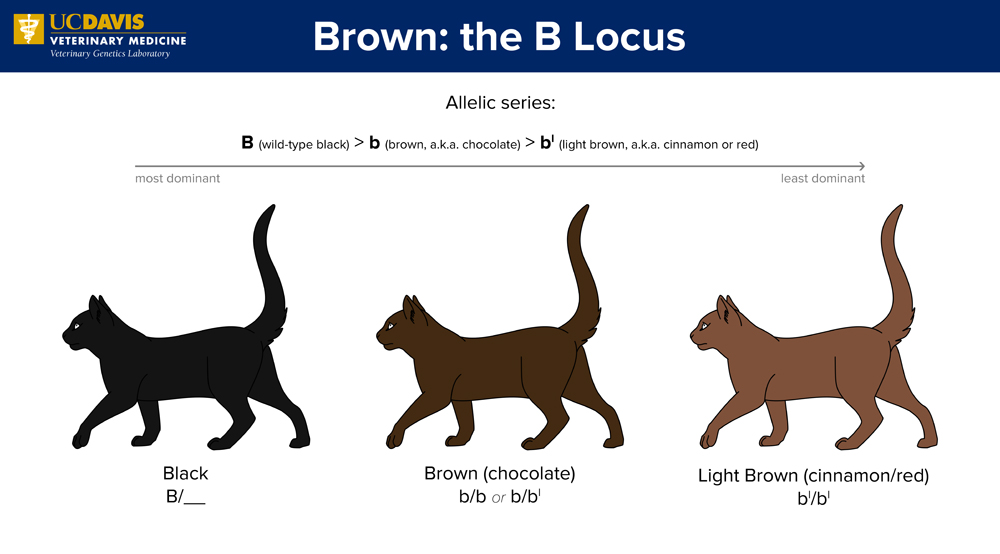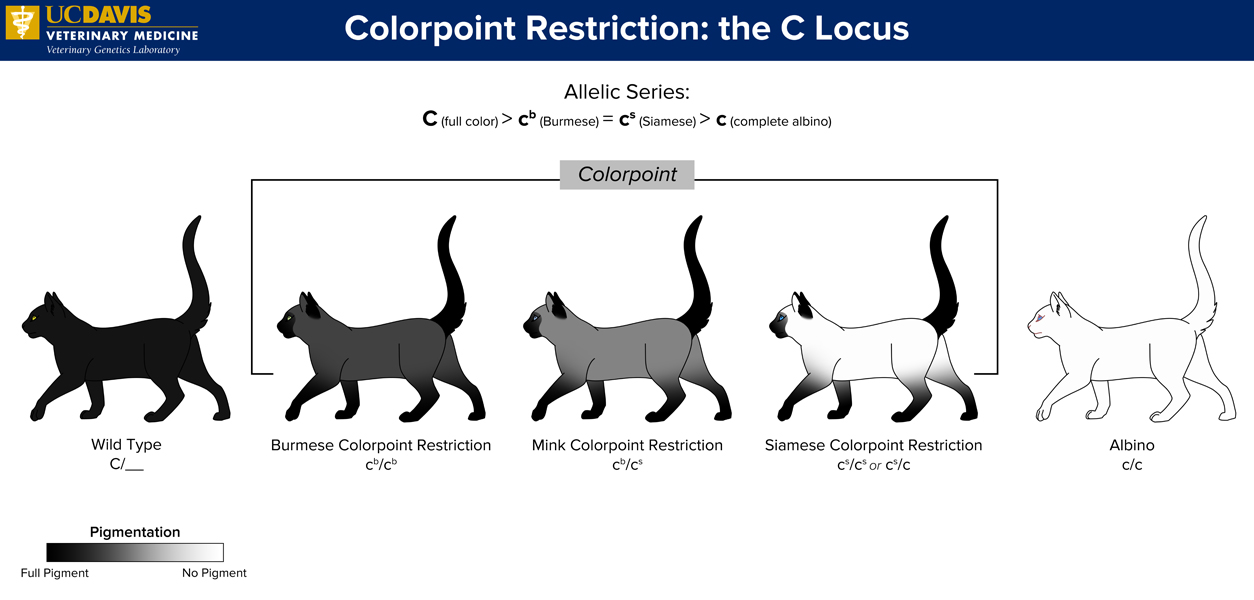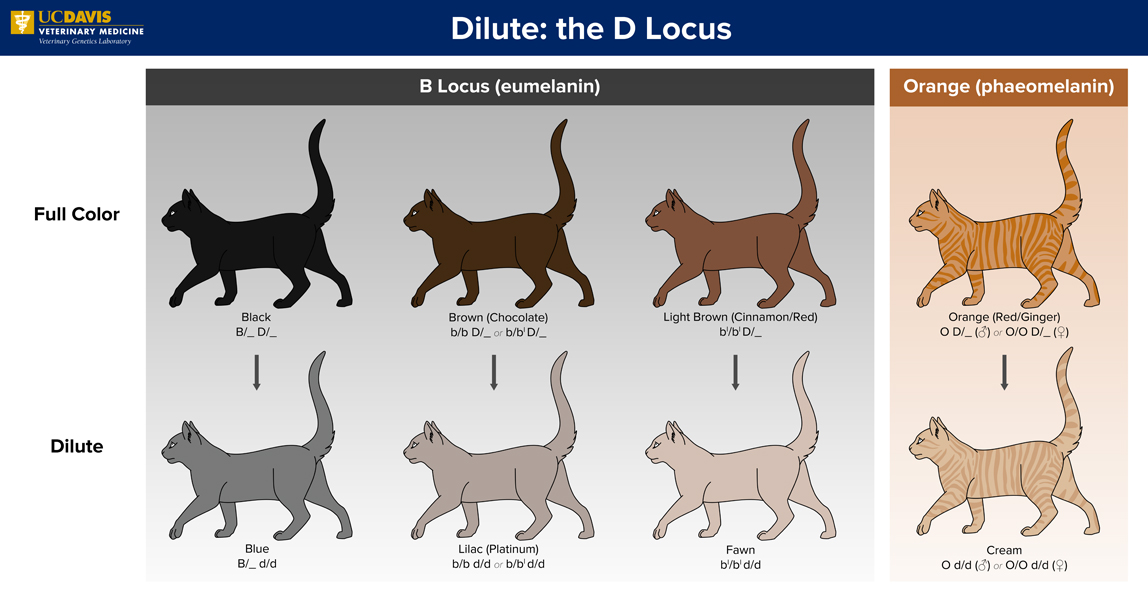Feline Coat Color
Introduction
The modern-day domestic cat displays a wide variety of coat colors and patterns. Classification of these can be confusing sometimes because different registries or associations may name the same phenotype differently. Below is a table of the coat color genes and DNA tests offered by the Veterinary Genetics Laboratory.
| Gene Name | Symbols | Function | Wild type |
|---|---|---|---|
| Agouti | A, a | Non-agouti, aa, cats are solid (self) in color. Tabby patterns are difficult to identify. | A |
| Amber | E, e | Gradual replacement of eumelanin with phaeomelanin, in Norwegian Forest cats. | E |
| Brown | B > b > bl | Brown variants have reduced eumelanin and appear brownish in color. b/b and b/bl are chocolate, bl/bl are cinnamon (red). | B |
| Colorpoint Restriction | C > cb = cs> c | Color controls production of melanin. Temperature sensitive alleles create points and sepia. Complete albinos have been identified. | C |
| Dilution | D, d | Dilution causes uneven distribution of the pigment in the fur shaft, dilution of all colors. | D |
| White Gloves | G, N | Birman white gloving pattern | N |



Tests Available at the VGL
Coat Color Panels:
- Coat Color
- Coat Color + White Gloves (Birmans)
- Bengal Coat Color
- Bengal Coat Color + White Gloves (Birmans)
Single Tests:
- Agouti
- Charcoal Pattern - Bengal Cat
- Amber – Norwegian Forest Cat
- Brown (chocolate and cinnamon)
- Colorpoint Restriction (Color)
- Dilute
- White Gloves – Birman Pattern
For additional information on the genetics of coat color/patterns in cats, please consult the references given below.
1. Robinson's Genetics for Cat Breeders and Veterinarians. Fourth edition. (1999) Vells CM, Shelton LM, McGonagle JJ, & Stanglein TW Butterworth-Heinemann, Oxford.
2. Lyons LA, Imes DL, Rah HC, & Grahn RA. (2005) Tyrosinase mutations associated with Siamese and Burmese patterns in the domestic cat (Felis catus). Animal Genetics, 36:119-126. See additional references cited in this paper.
3. Lyons LA, Foe IT, Rah HC, & Grahn RA. (2005) Chocolate coated cats: TYRP1 mutations from brown color in domestic cats. Mammalian Genome 16:356-366.
4. Ishida Y, David VA, Eizirik E, Schäffer AA, Neelam BA, Roelke ME, Hannah SS, O'brien SJ, Menotti-Raymond M. 2006. A homozygous single-base deletion in MLPH causes the dilute coat color phenotype in the domestic cat. Genomics 88:698-705.
5. Peterschmitt M, Grain, F, Arnaud B, Deleage, G. & Lambert, V.. Mutation in the melanocortin 1 receptor is associated with amber colour in the Norwegian Forest Cat. Animal Genetics doi:10.1111/j.1365-2052.2009/01864.
